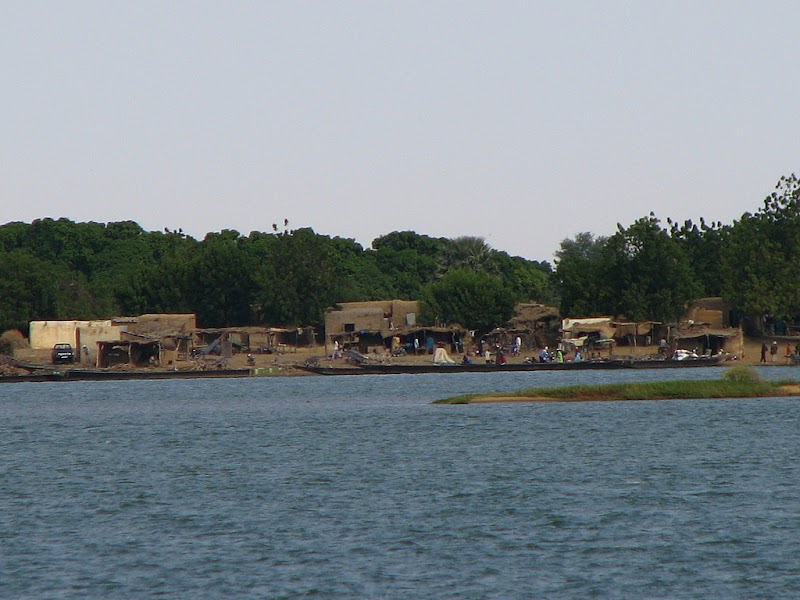
Festival sur le Niger in Ségou pulses with vibrant music and culture, set against the ever-present flow of the Niger River. This annual celebration invites adventurers to experience Mali’s rich heritage firsthand through dynamic performances and engaging local traditions.
Stay Hydrated Throughout the Day
Temperatures during the festival average around 30°C; carry at least 2 liters of water per day and refill regularly to avoid dehydration.
Wear Comfortable, Breathable Footwear
Expect to walk several kilometers between venues on mostly flat terrain; choose shoes that offer good grip and ventilation.
Arrive Early for Best Viewing
Reach key performance sites early to claim good spots and avoid the heavy crowds that build by evening.
Protect Yourself from the Sun
Bring a hat and apply sunscreen frequently, as shade is limited and the sun can be intense during afternoon sets.
Rhythms of the Niger: Navigating Festival sur le Niger in Ségou, Mali
Each year, Ségou pulses with life as Festival sur le Niger transforms the town into a vibrant stage of sound, culture, and shared energy. Perched on the banks of the Niger River, this annual event draws music lovers and culture seekers alike to a blend of traditional Malian rhythms and contemporary beats. Festival sur le Niger is more than music—it's a practical adventure in cultural immersion, offering an accessible yet richly layered experience steeped in local heritage.
The festival spans five days, usually in March, and scatters across multiple venues from open-air stages to riverfront platforms. The Niger River, ever fluid and daring, sets the tempo, its currents pushing the flow of performances and spectators. The heart of Ségou, with its dusty streets and ochre buildings, acts as both backdrop and active participant, welcoming visitors to wander from one concert to the next.
Sound plays with the winds here: djembes call out from shaded courtyards, ngonis string notes trail through the market areas, and a chorus of voices erupts in fervent unity. The terrain underfoot invites ease—mostly flat urban paths mixed with soft riverbanks where families and travelers find space to settle. With temperatures averaging around 30°C (86°F), hydration becomes a nonnegotiable part of the day, as the sun demands attention and respect.
Practical tips can sharpen your festival strategy: light, breathable clothing and solid walking shoes are essential. The festival’s vibrancy peaks at dusk when the heat subsides and musicians take over under canvas tents or improvised stages. Arriving early to secure good vantage points and setting a daily walking plan will make the moving festival feel manageable.
Engagement here requires an open spirit. You'll find musicians sharing stories on stage, artisans shaping local crafts, and river trade continuing unabated alongside. The experience gently challenges visitors to balance taking in the spectacle and pausing to understand the cultural significance behind each song and movement.
Navigating Festival sur le Niger is a chance to witness a community fiercely itself—rooted in history yet boldly forward-looking. It’s a celebration anchored by the life-giving Niger River, which dares you to listen, move, and be present. For adventurers keen on more than a passive audience role, this festival encourages curiosity and active participation, making every step and note count.
Nearby Trips
All Adventures
Boat Charters
Water Activities
Adventures near Ségou, Mali
Discover the unique and memorable adventures that make Ségou, Mali special.
Frequently Asked Questions
What styles of music are featured at Festival sur le Niger?
The festival highlights traditional Malian music such as griot storytelling and kora playing alongside contemporary genres including jazz and afrobeat, creating a diverse program that appeals to many tastes.
How accessible is the festival for international travelers?
Ségou is reachable by road from Bamako, Mali’s capital, and offers basic accommodation options. Language can be a barrier, but many festival organizers and vendors speak French. Planning ahead with local guides helps ease navigation.
Are there opportunities to interact with artists and locals?
Yes, Festival sur le Niger encourages community engagement. Attendees can visit workshops, artisan markets, and informal jam sessions where artists share their craft and stories.
What environmental practices are in place during the festival?
Efforts include waste reduction campaigns and promoting reusable cups. Support for local conservation groups working on Niger River preservation also features as part of festival outreach.
Is it safe to explore the Niger River during the festival?
Daytime river walks and boat rides are common and generally safe, but the river's currents are strong and can be unpredictable. Avoid solo swimming and always heed local advice.
What local foods should visitors try at the festival?
Taste staples like tô (millet porridge), grilled fish from the Niger, and fried peanut snacks. Street vendors offer fresh, affordable meals that pair well with the lively festival atmosphere.
Recommended Gear
Breathable Walking Shoes
Ventilated and sturdy shoes aid ease on dusty streets and riverbanks.
Water Bottle with Filter
Clean water access can be uneven; filtering your own water is a safe bet.
Sun Hat
Provides necessary shade during daytime concerts and market strolls.
Lightweight Backpack
Keeps essentials handy without weighing you down during extended walks.
Local Insights
Hidden Gems
- "The small island of Fala Daia offers quiet river views away from the crowd."
- "Ségou's colonial-era adobe houses offer architecture walks revealing the town’s layered history."
Wildlife
- "Watch for vibrant kingfishers darting along the riverbanks and monitor lizards sunning on rocks."
- "Migratory birds arrive during the festival season, including impressive raptors circling overhead."
History
"Ségou once served as the capital of the Bambara Empire, making the festival's celebrations part of a long continuum of cultural pride tied to the Niger River’s lifeline."
